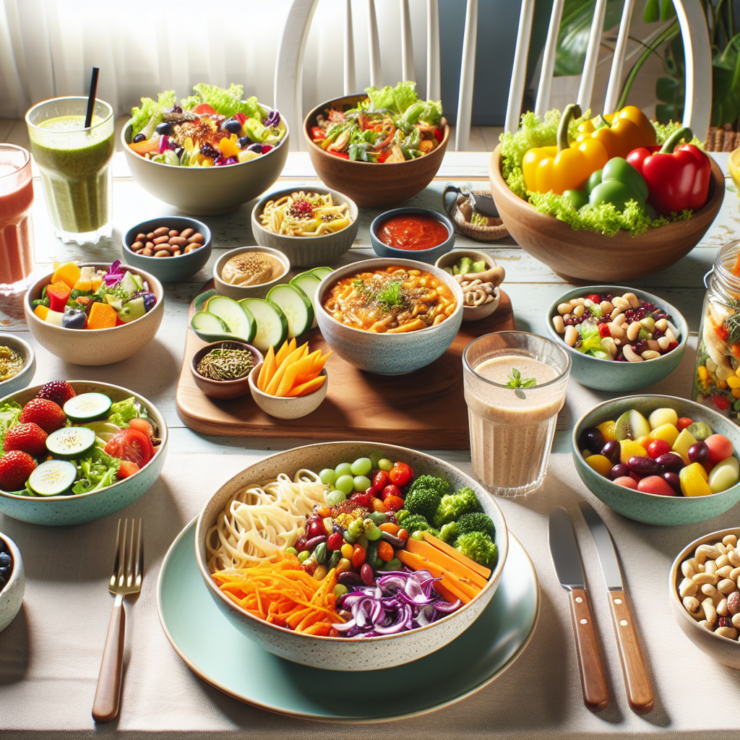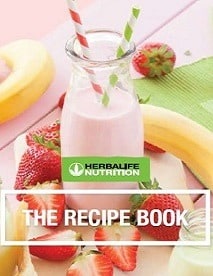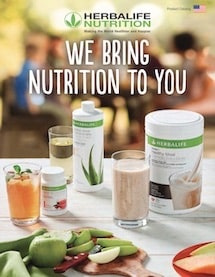Introduction to Vegan Dinners
The Rise of Plant-Based Eating
In recent years, there has been a significant shift towards plant-based eating, with more individuals embracing vegan meals as part of their daily routine. This change is often motivated by a variety of factors, including personal health, ethical beliefs concerning animal welfare, and a growing awareness of the environmental impact of traditional animal-based diets. The trend is reflected in the increasing availability of vegan options in grocery stores, restaurants, and food delivery services, making it easier than ever to access plant-based meals.
Benefits of a Vegan Diet for Health and the Environment
Adopting a vegan diet comes with a plethora of benefits, both for individual health and the well-being of the planet. Those who follow a vegan lifestyle often report improvements in various health markers, including weight management, cholesterol levels, and blood pressure. The absence of animal products from the diet also means a reduced intake of saturated fats and a higher consumption of fiber and beneficial plant compounds.
From an environmental perspective, plant-based diets are associated with a lower carbon footprint compared to diets that include meat and dairy. The production of plant-based foods generally requires less water and land, and results in lower greenhouse gas emissions. This positive impact on the environment is a compelling reason for many to choose vegan meals.
| Health Benefit | Environmental Benefit |
|---|---|
| Weight management | Reduced water usage |
| Lower cholesterol levels | Lower greenhouse gas emissions |
| Improved blood pressure | Minimal land requirements |
The table above highlights some of the key benefits of a vegan diet for health and the environment, illustrating the dual advantages of this dietary choice. As the world becomes more conscious of the need for sustainable living practices, healthy vegan dinner ideas are not just a dietary preference but also a step towards a more eco-friendly lifestyle.
Building Blocks of a Healthy Vegan Dinner
Crafting a wholesome vegan dinner that satisfies both taste and nutritional needs involves focusing on several key components. These components work together to ensure that each meal provides essential nutrients, adequate protein, and the benefits of whole foods.
Essential Nutrients in a Vegan Diet
Vegan diets must be carefully planned to include all the necessary nutrients that the body requires. Key nutrients include vitamins B12 and D, omega-3 fatty acids, iron, calcium, zinc, and iodine. These nutrients support overall health and well-being and can be found in various plant-based sources.
| Nutrient | Plant-Based Sources |
|---|---|
| Vitamin B12 | Fortified foods, nutritional yeast |
| Vitamin D | Fortified foods, sunlight exposure |
| Omega-3 Fatty Acids | Flaxseeds, chia seeds, walnuts |
| Iron | Legumes, tofu, spinach |
| Calcium | Fortified plant milks, leafy greens |
| Zinc | Pumpkin seeds, lentils, chickpeas |
| Iodine | Seaweed, iodized salt |
It is essential to ensure a varied and balanced diet to meet these nutritional needs. Supplements can also be considered to fill any gaps, particularly for nutrients like vitamin B12, which is challenging to obtain in adequate amounts from plant-based foods alone.
Vegan Protein Sources
Protein is a crucial macronutrient that supports muscle repair, growth, and various bodily functions. Vegan diets can provide ample protein through a variety of plant-based foods.
| Protein Source | Protein Content (per serving) |
|---|---|
| Lentils | 18g |
| Chickpeas | 14.5g |
| Tofu | 20g |
| Tempeh | 18g |
| Quinoa | 8g |
| Black Beans | 15g |
| Almonds | 6g |
Including a variety of these protein sources in vegan dinners ensures adequate protein intake. It is also beneficial to combine different protein sources, as this can provide a more comprehensive range of essential amino acids.
Incorporating Whole Foods
A focus on whole foods is fundamental in constructing a healthy vegan dinner. Whole foods include fruits, vegetables, grains, nuts, seeds, and legumes. These foods are minimally processed and free from additives, providing the body with a rich array of nutrients and fiber.
| Whole Food Category | Examples |
|---|---|
| Fruits | Apples, berries, oranges |
| Vegetables | Broccoli, carrots, kale |
| Grains | Brown rice, oats, barley |
| Nuts | Walnuts, almonds, cashews |
| Seeds | Pumpkin seeds, sunflower seeds, flaxseeds |
| Legumes | Beans, lentils, chickpeas |
Incorporating a diverse selection of whole foods into vegan dinners not only contributes to a nutrient-dense meal but also adds a variety of textures and flavors, making the meal more enjoyable and satisfying.
By paying attention to these building blocks, individuals can create healthy vegan dinner ideas that are both nourishing and aligned with sustainable living practices. Whether it be a simple stir-fry or a complex curry, the foundation of a healthy vegan dinner remains the same: a focus on essential nutrients, protein richness, and the wholesomeness of unprocessed foods.
Quick and Nutritious Vegan Dinner Components
Creating a balanced vegan meal involves combining various food groups to ensure a range of nutrients are included. Here we focus on four key components that make up a quick and nutritious vegan dinner: grains and starches, vegetables and greens, plant-based proteins, and healthy fats.
Grains and Starches
Grains and starches are the foundation of many healthy vegan dinner ideas, providing energy, fiber, and various nutrients. When selecting grains, opting for whole grains is advisable as they contain higher nutritional content compared to their refined counterparts.
| Grain/Starch | Fiber (g per cup cooked) | Protein (g per cup cooked) |
|---|---|---|
| Quinoa | 5 | 8 |
| Brown Rice | 3.5 | 5 |
| Sweet Potato | 4 | 2 |
| Oats | 4 | 6 |
These options offer versatility and can be used in a variety of dishes, from pilafs and porridges to hearty stews and casseroles.
Vegetables and Greens
Vegetables and greens are essential in a vegan diet, offering vitamins, minerals, and fiber. They can be prepared in countless ways, such as steamed, roasted, or raw, and integrated into every meal.
| Vegetable/Green | Vitamin A (IU per cup) | Vitamin C (mg per cup) |
|---|---|---|
| Kale | 8853 | 53 |
| Broccoli | 5677 | 81 |
| Carrots | 21384 | 7.6 |
| Bell Peppers | 3726 | 190.3 |
Incorporating a colorful array of vegetables ensures a wide range of antioxidants and nutrients are consumed.
Plant-Based Proteins
Protein is a crucial macronutrient and there are many plant-based sources that can be included in vegan dinners. Legumes, tofu, and tempeh are among the most protein-rich options.
| Plant-Based Protein | Protein (g per 100g) |
|---|---|
| Lentils | 9 |
| Black Beans | 8.9 |
| Tofu | 8 |
| Tempeh | 19 |
These proteins can be used in various dishes like curries, tacos, and salads, providing satiety and essential amino acids.
Healthy Fats
Healthy fats are important for nutrient absorption and overall health. Sources of plant-based fats include nuts, seeds, and avocados, which offer a good balance of omega-3 and omega-6 fatty acids.
| Healthy Fat Source | Fat (g per oz) | Omega-3 (mg per oz) |
|---|---|---|
| Chia Seeds | 9 | 4915 |
| Walnuts | 18 | 2542 |
| Flaxseeds | 12 | 6388 |
| Avocado | 21 | varies by size |
These fats can be incorporated into dressings, spreads, or simply sprinkled over dishes to enhance flavor and add nutritional value.
Easy Healthy Vegan Dinner Ideas
Creating a nutritious vegan dinner that’s also quick and easy is a breeze with the right ingredients and simple cooking methods. Here are some healthy vegan dinner ideas that are sure to satisfy your palate while aligning with a plant-based lifestyle.
One-Pot Wonders
One-pot meals are the epitome of convenience and are perfect for those who want to minimize cleanup. These dishes often involve simmering a variety of ingredients in a single pot, resulting in a meal that’s packed with flavor and nutrients.
- Chickpea Tomato Spinach Curry: A flavorful curry that combines protein-rich chickpeas, iron-packed spinach, and antioxidant-rich tomatoes.
- Lentil Sweet Potato Stew: A hearty stew that’s rich in fiber, protein, and beta-carotene from the sweet potatoes.
These one-pot meals are a fantastic way to incorporate a variety of plant-based proteins, grains, and vegetables into one dish.
Vegan Bowls
Vegan bowls are a quick way to assemble a balanced meal with layers of flavor and texture. They usually consist of a grain base, a protein source, an assortment of vegetables, and a flavorful dressing.
- Quinoa Tofu Bowl: A high-protein bowl featuring quinoa, baked tofu, and an assortment of colorful veggies like bell peppers and avocados.
- Buddha Bowl: A nutrient-dense bowl with brown rice, roasted chickpeas, steamed broccoli, and a tahini-based dressing.
These bowls offer a customizable approach to dinner, allowing for an array of nutrient-dense ingredients to be combined in a single meal.
Stir-Fries and Sautees
Stir-fries and sautées are quick cooking methods that retain the nutrients in your food while infusing them with great flavor.
- Tofu Vegetable Stir-Fry: A dynamic stir-fry with tofu for protein, a variety of vegetables like snap peas and carrots, and a savory sauce.
- Mushroom Garlic Sauté: A simple yet satisfying dish featuring mushrooms, garlic, and spinach, sautéed until just tender and fragrant.
These cooking methods are perfect for a fast-paced lifestyle and allow for endless variety based on the ingredients you have on hand.
Hearty Salads
Salads don’t have to be just a side dish; they can be transformed into a filling main course.
- Kale and Black Bean Salad: A fiber-rich salad with massaged kale, black beans, corn, and a zesty lime dressing.
- Chickpea Mediterranean Salad: A protein-packed salad with chickpeas, cucumbers, tomatoes, and olives, tossed in a lemon-herb vinaigrette.
Hearty salads are an excellent way to incorporate fresh produce into your diet, ensuring you get a multitude of vitamins and minerals.
Each of these healthy vegan dinner ideas can be tailored to your personal taste and nutritional needs, making vegan dinners not only easy to prepare but also enjoyable and diverse. With these simple concepts, you’ll have an array of options to keep your dinners fresh, exciting, and aligned with a sustainable, plant-based diet.
Flavorful Additions
To elevate the taste and appeal of vegan dishes, an array of herbs, spices, and condiments can be utilized. These flavorful additions not only enhance the taste but also contribute to the nutritional value of the meals. Let’s explore some options that can transform simple ingredients into delightful and healthy vegan dinner ideas.
Herbs and Spices
Herbs and spices are the cornerstone of adding depth and character to vegan cuisine. They infuse the dishes with rich flavors without the need for animal-based ingredients. Common herbs like basil, cilantro, and oregano offer fresh and aromatic notes to dishes, while spices such as cumin, turmeric, and paprika provide warmth and complexity.
The health benefits of these herbs and spices are an added bonus. Many contain potent antioxidants and have anti-inflammatory properties that contribute to overall health. Experimenting with different combinations can result in a diverse range of flavors that keep vegan dinners exciting and satisfying.
Vegan Sauces and Dressings
Sauces and dressings can transform a simple vegan meal into a gourmet experience. Vegan variations of classic sauces, such as marinara or pesto, can be made without dairy or other animal products. Nutritional elements are often present in these sauces, particularly when incorporating ingredients like tomatoes, which are high in vitamin C, or nuts and seeds, which provide healthy fats and protein.
Creating creamy dressings without dairy is also possible by using ingredients like avocado, cashews, or tahini. These ingredients bring creaminess and richness to dressings and can also serve as a base for a variety of flavor profiles ranging from tangy to sweet.
Nutritional Yeast and Other Flavor Enhancers
Nutritional yeast is a staple in vegan pantries due to its cheesy flavor and health benefits. It is a complete protein and is often fortified with B vitamins, including B12, which is particularly important in a vegan diet. Nutritional yeast can be sprinkled over dishes for a nutty, cheesy taste or incorporated into sauces and dressings.
Other flavor enhancers include umami-rich ingredients like tamari, miso, and mushrooms. These can add a depth of flavor that mimics the savory qualities often associated with non-vegan foods. Vinegars and citrus juices can also be used to brighten dishes and add a refreshing zing.
By incorporating these flavorful additions, individuals can enjoy vibrant and healthy vegan dinner ideas that satisfy the palate and contribute to a sustainable lifestyle. The use of herbs, spices, sauces, and other enhancers ensures that plant-based meals are anything but bland, providing a delicious and nutritious end to the day.
Prepping for the Week
Crafting a week’s worth of healthy vegan dinner ideas can be a breeze with some planning and preparation. By employing meal planning, batch cooking, and quick assembling techniques, one can ensure that each evening meal is both nutritious and satisfying without spending hours in the kitchen daily.
Meal Planning Tips
Meal planning is a cornerstone of a stress-free week of healthy eating. Start by choosing a variety of dishes that incorporate a diverse range of nutrients and flavors to keep things interesting. Create a balance of grains, vegetables, plant-based proteins, and healthy fats for well-rounded meals.
| Day | Main Ingredient | Protein Source | Vegetable |
|---|---|---|---|
| Monday | Quinoa | Chickpeas | Spinach |
| Tuesday | Brown Rice | Tofu | Broccoli |
| Wednesday | Whole Wheat Pasta | Lentils | Kale |
| Thursday | Barley | Black Beans | Carrots |
| Friday | Sweet Potato | Tempeh | Bell Peppers |
Plan for versatility; ingredients prepped for one meal can be easily repurposed for another. A batch of quinoa cooked on Monday could be a side dish one day and part of a salad the next.
Batch Cooking and Storage
Batch cooking is a time-saving strategy that involves preparing large quantities of staple ingredients at the start of the week. This could include cooking grains, legumes, roasting vegetables, or making a large batch of soup or stew.
Store these components in separate containers in the refrigerator, ensuring they are cooled to room temperature before sealing to maintain freshness. Use clear containers to keep track of what you have, and label them with dates to manage usage throughout the week.
| Ingredient | Shelf Life (Days) | Storage Tip |
|---|---|---|
| Cooked Grains | 3-5 | Airtight Container |
| Roasted Vegetables | 3-4 | Separate from Liquids |
| Cooked Legumes | 4-6 | Store in Cooking Liquid |
| Homemade Dressings | 5-7 | Shake Before Use |
Quick Assembling Techniques
Once the prep work is done, assembling a healthy vegan dinner can be quick and effortless. Begin with a base, like grains or greens, add a protein source, and top with a variety of vegetables. Drizzle with a homemade dressing or sprinkle with seeds or nuts for added texture and nutrients.
Utilize leftovers creatively; last night’s roasted veggies can become tonight’s stir-fry. Keep a variety of spices and condiments on hand to enhance flavors and add variety to repeated ingredients.
By implementing these strategies, individuals can enjoy nourishing, plant-based meals that support a sustainable lifestyle without the daily hassle. With a little foresight and some simple prepping techniques, whipping up healthy vegan dinner ideas becomes a seamless part of one’s routine.











